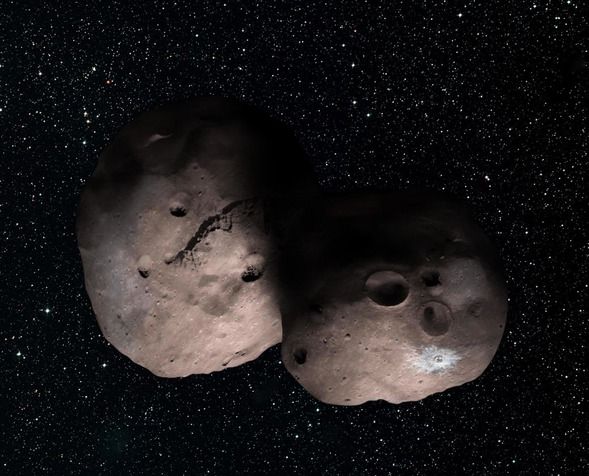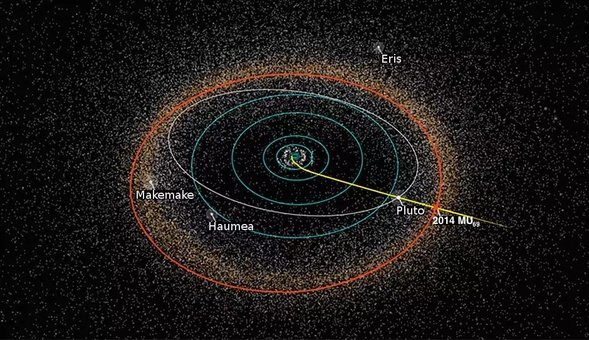The New Horizons probe has made a great contribution to humanity and will find a special place on the pages of the history of space exploration. It allowed us to get to know the many secrets that Pluto hid many decades after its discovery. Now the device sent by NASA is approaching the new purpose of its research, namely the mysterious asteroid (486958) 2014 MU69, located on the outskirts of the Solar System.
In November last year, the SETI Institute and NASA announced a competition for the final name of this facility, so that we would not have to remember these strange numbers. The agency has just announced that the name has been chosen and from now we can define 2014 MU69 as: Ultima Thule.
What does this enigmatic name mean? In the Middle Ages, in this way, the northern land was defined, marking the end of the world known to us, often identified with the Nordic countries or the Arctic. You admit that this is the perfect name for an object that traverses the space of the mysterious Kuiper Belt, a space that is almost unknown to us.
This object awakens a lot of emotions in the world of astronomy. This is due to the latest data collected about him. The data comes from the telescopes working in Patagonia and the flying SOFIA Observatory, or Boeing 747 equipped with a 2.5-meter telescope operating in the infrared range. It must be said that MU69 is a completely different object than we previously imagined.

A few months ago we learned that they are probably two objects in contact with each other and 15-20 kilometers in diameter. Nay. Now it turns out that this fascinating object in the shape of a walnut shell can be circled by the moon. Such conclusions were drawn by the New Horizons team after analyzing the asteroid's orbit.
If this is the case, it will be a significant discovery that makes us realize that even distant objects on the borders of the Solar System may have their own natural satellites and are more complex than we thought. Similarly, as with Pluto, which positively surprised us, and yet it is only a dwarf planet.

2014 MU69 is located 6.5 billion kilometers from Earth and exploring it will allow us to discover many puzzles about the history of formation of the Solar System, and therefore everything that happened 4.6 billion years ago. The New Horizons probe will reach Ultima Thule on January 1, 2019.
Meanwhile, NASA has recently been discussing the future of the probe mission. It turns out that the device is in great condition and if, after examining the MU69, it still will be so, astronomers want to use the probe for testing other celestial bodies in the Kuiper Belt.
Powering the device is to allow exploration until the year 2035. At the moment, the agency has a plan to finance the mission until 2021 and wants to take a closer look at 30 mysterious objects.
If scientists find something interesting, then the mission can be extended by further years. This is very important because the space there and objects located in it can tell us the history of the formation of our Solar System. Already at this moment, thanks to the New Horizons mission, our knowledge about the objects behind Pluto has expanded enormously. The best is yet to come.